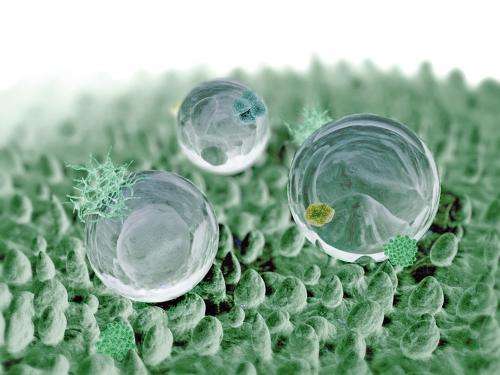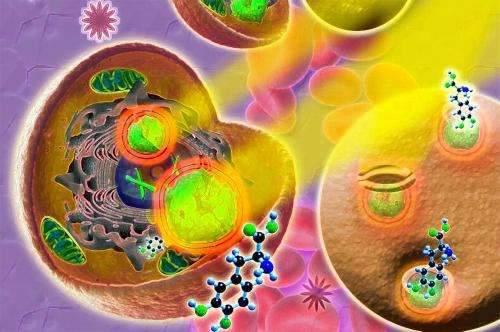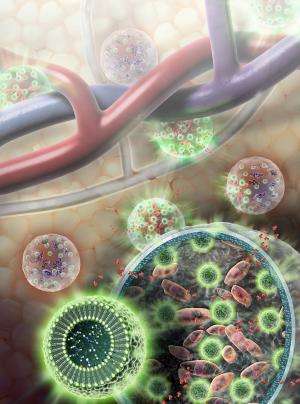Nano-hydrogels that attack cancer cells

Hydrogels are materials that are commonly used in everyday objects such as contact lenses or diapers, in order to control humidity. However, chemical engineers at the University of Guadalajara (UdeG), in Mexico, have developed a new technology based on thermosensitive nanoparticles (nano-hydrogels) to use these materials in the field of biomedicine, as an alternative to achieve controlled release of anticancer drugs.
Eduardo Mendizábal Mijares, professor at the Department of Chemistry, in the University of Guadalajara, says, "We used nano-hydrogels loaded with drugs and injected them into the patient. While passing through the bloodstream, the drug is not detected nor attacked by the immune system due to the physical and chemical properties which make them compatible with the body".
The idea is that the drug, carried within the nano-hydrogels, is transported directly to cancer cells where it can be released without damaging other parts of the body, because hydrogels offer the possibility of dosing multiple active substances on the desired site. Drugs can be administered as dry or swollen hydrogels by various routes: oral, nasal, buccal, rectal, transdermal, vaginal, ocular and parental. Drug release may come by a volume increase, changes in pH, or temperature.
The development also adds magnetic particles to the hydrogels nanopolymer with the aim of producing a force field to raise the temperature to destroy cancer cells.
A polymerization technique for creating thermosensitive nano-hydrogels mixes substances with different chemical and physical characteristics, achieving a chemical reaction and forming a set of small spheres called polymers.

The nano-hydrogels have demonstrated biocompatibility with human biology due to their resemblance to living tissues, particularly its high water content, its soft and elastic consistency, and low interfacial tension that prevents them from absorbing proteins from body fluids.
They absorb large amounts of water without losing shape, and have the ability to retain heat at a temperature between 37 and 42 degrees Celcius. By combining emulsion polymerization and microemulsion the researchers were able to synthesize structured hydrogels that present degrees of swelling and have better mechanical properties than conventional hydrogels.

These materials are used primarily in the biomedical field as diagnostic tools in membranes, coatings, microcapsules, implants for applications of short or long duration and systems of controlled drug release. Also, the nano-hydrogels are used to regenerate tissue or mend fractures, serving as substrates for cell growth.
While molecular target drugs are already used against cancer, the novelty of this work is that materials such as nano-hydrogels can attack the cancer cells or tissues without damaging healthy body parts.
Provided by Investigación y Desarrollo




















